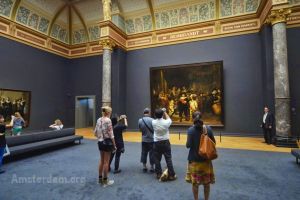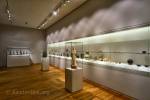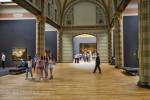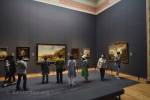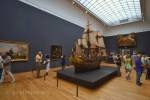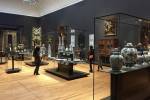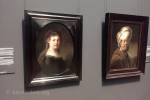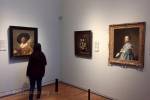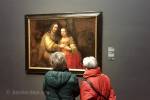Rijksmuseum
Located in the heart of Amsterdam, on the stunning Museumplein, stands the Rijksmuseum, one of the most renowned and imposing museums in the world. With a staggering collection of over a million artworks, the Rijksmuseum narrates the tale of 800 years of Dutch history, from the Middle Ages to the present day.

Collection Highlights
The Rijksmuseum houses an unparalleled assortment of artworks, including masterpieces by grandmasters like Rembrandt, Vermeer, and Van Gogh. Some must-see highlights include:
- "The Night Watch" by Rembrandt: An iconic painting capturing a lively scene of a civilian militia.
- "The Milkmaid" by Vermeer: A beautiful depiction of daily life in the Golden Age.
- Self-portraits by Van Gogh: A profound glimpse into the psyche of one of Holland's most famous artists.
- "The Syndics" by Rembrandt: A detailed group portrait showcasing the inspectors from the drapers' guild.
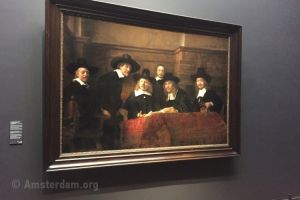
- "Winter Landscape with Ice Skaters" by Avercamp: This vibrant painting provides a picturesque view of a wintry day in the Netherlands.
- "The Battle of Waterloo" by Pieneman: A grand and dramatic piece that showcases the pivotal moment of the Battle of Waterloo in 1815.
More than just Paintings
Besides the magnificent painting collection, the museum also houses intriguing collections of sculptures, decorative arts, Asian art, and artefacts that shed light on the rich maritime tradition and the Golden Age of the Netherlands. Some noteworthy highlights include:
- Doll's House of Oortman: One of the most detailed and luxurious dollhouses from the 17th century, reflecting daily life of that era.
- Asian Art Collection: Housed within the graceful Asian Pavilion, this collection showcases artworks from countries like China, Japan, and India. It not only exhibits the rich artistry of these nations but also the historical interaction between the East and West.
- Medieval Sculpture: Within the walls of the Rijksmuseum, you will find an extensive collection of medieval sculptures, including the striking wooden statue of Mary Magdalene.
- Cabinets of Curiosities: Dive into the fascinating world of 17th-century Dutch with a collection of rare and exotic items. From intricately crafted timepieces to rare shells and minerals, this collection displays the curiosity and collecting zeal of the Dutch during the Golden Age.
An Architectural Masterpiece
The building of the Rijksmuseum itself is a work of art. Designed by the renowned architect Pierre Cuypers and opened in 1885, it combines both Gothic and Renaissance styles. The recent renovation has made the building shine even brighter, boasting modern facilities and beautifully restored halls and galleries.
Practical Information
- Tickets: It is recommended to purchase tickets online in advance to avoid queues.
- Facilities: There are audio guides available in various languages, a museum shop, and a café overlooking the museum garden.
Visitor Tips
- Start early to avoid the largest crowds, especially during the summer months.
- Wear comfortable shoes; the museum is expansive and there's a lot to see.
- Consider visiting the beautiful museum gardens, which are free to access.
A visit to the Rijksmuseum is a journey through time, where art, history, and culture converge. Whether you're an art enthusiast or simply curious about Dutch history, the Rijksmuseum offers an unforgettable experience for visitors of all ages. Plan your visit and delve deep into the rich tapestry of Dutch masterpieces.
Furthermore Rijksmuseum is near the following sights: Rijksmuseum Gardens (±100 m), Diamond Museum (±225 m), Moco Museum (±250 m), Rembrandts Amsterdam Experience (±250 m) & House of Bols: Cocktail & Genever Experience (±300 m).
For information
Stadhouderskade 42, Amsterdam
tel. +31 206 747 000
web. More information

